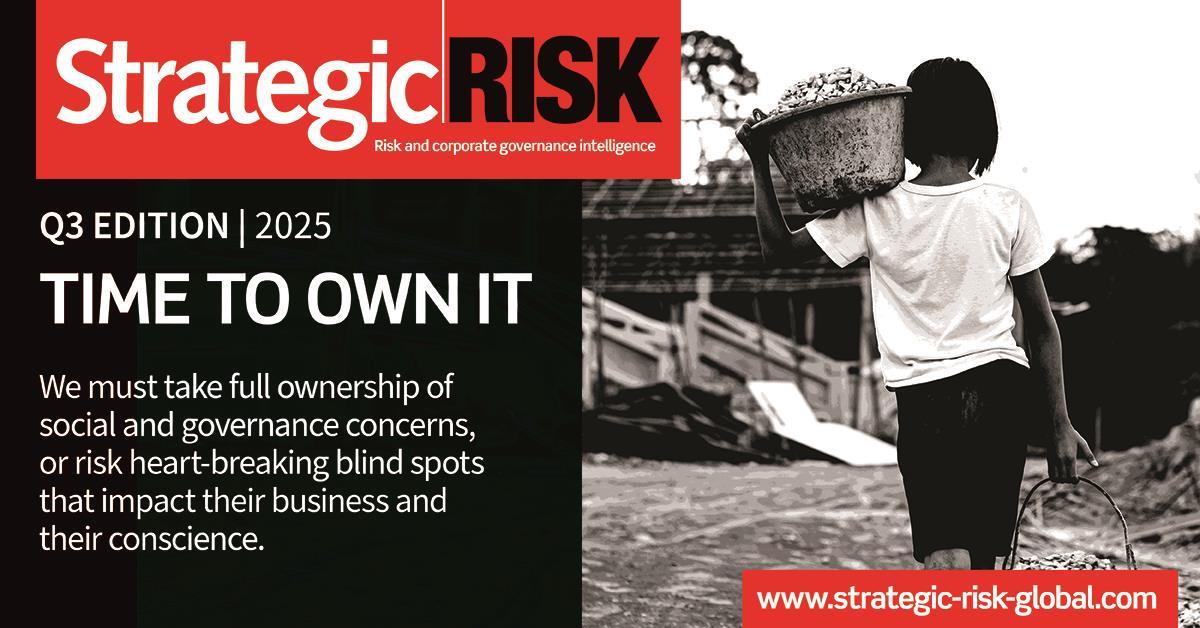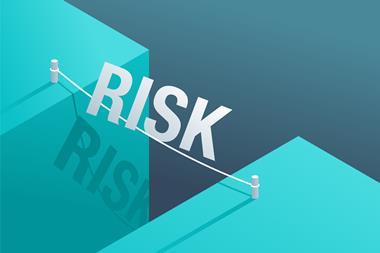At the Risk-!n conference in Zurich, two climate risk experts – Arjan Vos, enterprise risk manager at COFRA Holding, and Théophile Bellouard, VP at Altitude, AXA Climate – outlined what practical, systemic climate adaptation looks like, and how businesses can take action before it’s too late.
As climate change accelerates, businesses face a new era of chronic disruption.
From floods and heatwaves to collapsing supply chains and rising insurance costs, climate risks are no longer hypothetical -they’re already hitting bottom lines.

Théophile Bellouard, VP at Altitude, AXA Climate, opened the session with a stark warning that global temperatures are rising even more quickly than expected.
He reminded risk managers that the consequences are non-linear - hotter air carries more moisture, which drives more severe droughts and more intense rainfall. These shifts disrupt supply chains, strain infrastructure, and create systemic challenges across sectors.
Mitigation efforts remain essential, Bellouard stressed, but due to the Earth’s system inertia, their benefits will only be felt decades from now. “Everything that we do now will have effects only in 20 years. And so the next 20 years are already set.”
That, he said, makes adaptation an immediate necessity.
COFRA’s adaptation strategy: mapping risks and redesigning assets
Arjan Vos, enterprise risk manager at COFRA Holding, explained how the global holding company with investments spanning real estate, energy, and retail is already feeling the effects of climate change across its operations.
From flooding in Europe to extreme heat in Southeast Asia and Brazil, climate-related disruption is widespread.
COFRA has developed a two-step adaptation strategy: first, it maps climate hazards across its global portfolio to identify exposure to threats like heat, floods and landslides; then, it uses that insight to adapt assets and operations accordingly.
“The tool gives us a very good insight into where the main risks are and enables us todeep dive into the issues we have at specific assets,” Vos explaned.
In Southeast Asia, for example, heatwaves now render outdoor labour unsafe for weeks at a time, but many local suppliers cannot afford cooling technologies - creating cascading effects across the supply chain.
Meanwhile, in Brazil, repeated flooding means some stores must close several times a year. “Actually , we had to invest in little boats that can bring our people to the shops,” Vos noted.
Rethinking risk and insurance
One major consequence is pressure on insurability. In Germany, flood-prone assets are becoming difficult - or prohibitively expensive - to insure. As a result, COFRA is exploring new approaches including parametric insurance.
Climate impacts are also threatening the performance of “green” assets. In Spain, extreme heat is reducing solar panel efficiency and increasing maintenance costs,.
“You can argue there’s a lot of sun, but because of the extreme heat, the productivity of these solar panels is reducing dramatically and also the cost of maintenance are increasing exponentially,” Vos said.
He described how COFRA is integrating long-term climate scenarios into capital planning. While many investors focus on seven-to-ten-year horizons, assets like greenhouses have 25-year lifespans. “We then look at the climate scenarios for that location … what kind of design choices do you make now to make sure that your greenhouse will still be effective in 20, 25 years from now?”
The firm is also investing in nature-based solutions through its private equity arm, such as biodiversity restoration and agroforestry.
While proving impact remains difficult and returns can be slow, Vos argued these investments are vital to long-term business viability. “I’m convinced that that will be the future, that you have to look into those issues if you talk about adaptation, if you talk about resilient business.”
Embedding adaptation in decarbonisation efforts
COFRA’s adaptation work is integrated with its decarbonisation plans.
The company is working with value chain partners to reduce emissions and adopt energy-efficient technologies.
In construction, it’s shifting to sustainable materials like certified wood, while navigating national infrastructure constraints to expand renewable energy use. “The trick is not to fall back on fossil fuel use, but to push that transition.”
These dual efforts reflect the systemic nature of climate risk: emissions, water use, biodiversity and social impacts are all interlinked.
Bellouard illustrated the hidden fragility of global value chains with a case where floods in Valencia - affecting only a fraction of workers and suppliers - caused six-month delays to a tramway project in Lausanne.
He said: “Only 10% of suppliers and 20% of workers lead to a huge delay.” Such ripple effects underscore the need for companies to map dependencies well beyond their immediate assets.
Finally, Bellouard offered a pragmatic framework for businesses looking to embed climate adaptation into strategy:
-
Identify key risks: Assess threats in terms of frequency, intensity, and impact on operations.
-
Set clear objectives: Define actionable targets and evaluate interventions for feasibility and effectiveness.
-
Avoid maladaptation: “When you have AC, you are cooling down the air within the building, but you are warming the air outside … it’s also consuming more energy than just basically fueling more the global warming.”
-
Collaborate across systems: Individual resilience is insufficient. “It’s useless unless the adaptation was thought locally at the territory level.”
-
Focus on scalable, no-regrets moves: Simple measures like vegetation, shading or water conservation often deliver broad and lasting value.
In closing, Bellouard called on organisations to move beyond piecemeal interventions. “Adaptation isn’t just about protecting one factory. It’s about embedding resilience into the whole business and value chain,” he concluded.














No comments yet